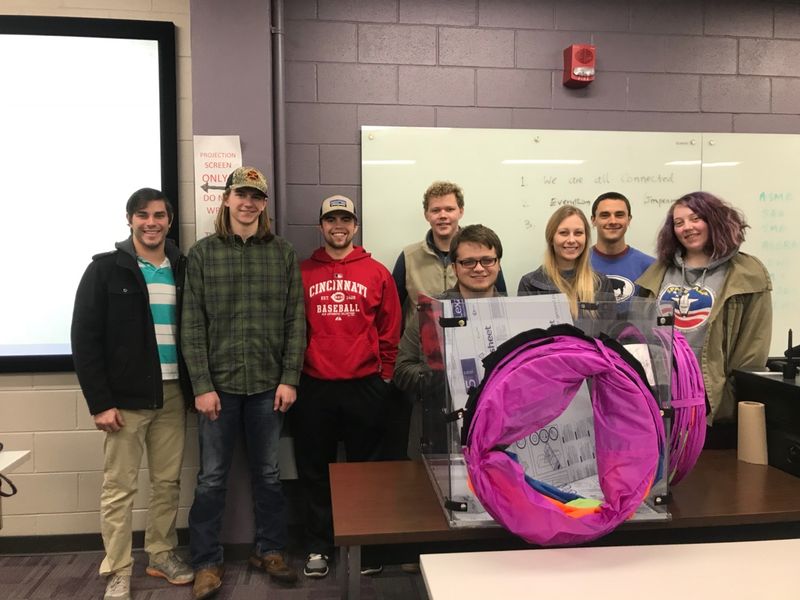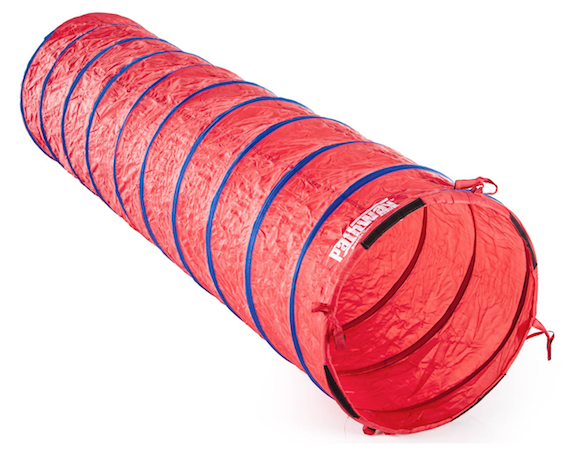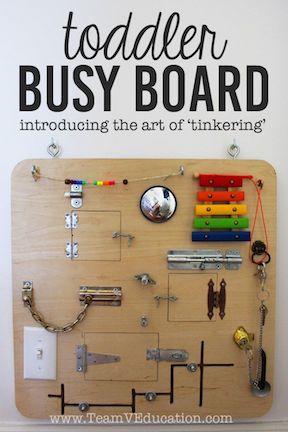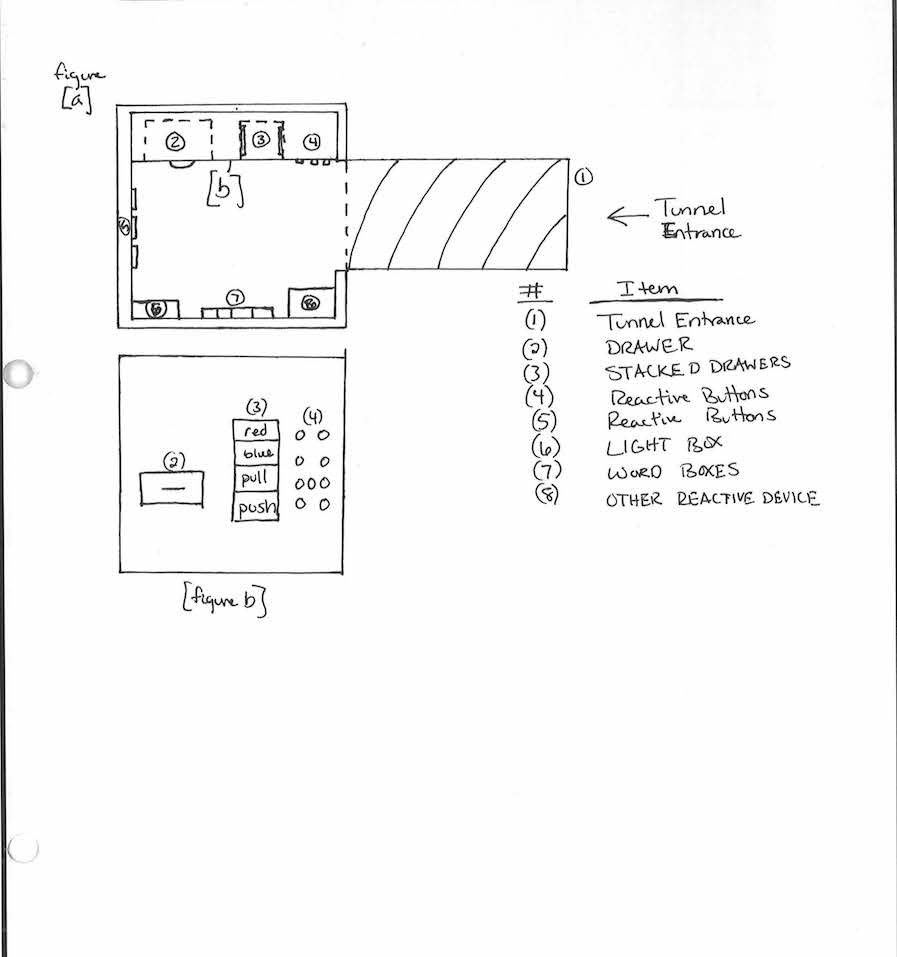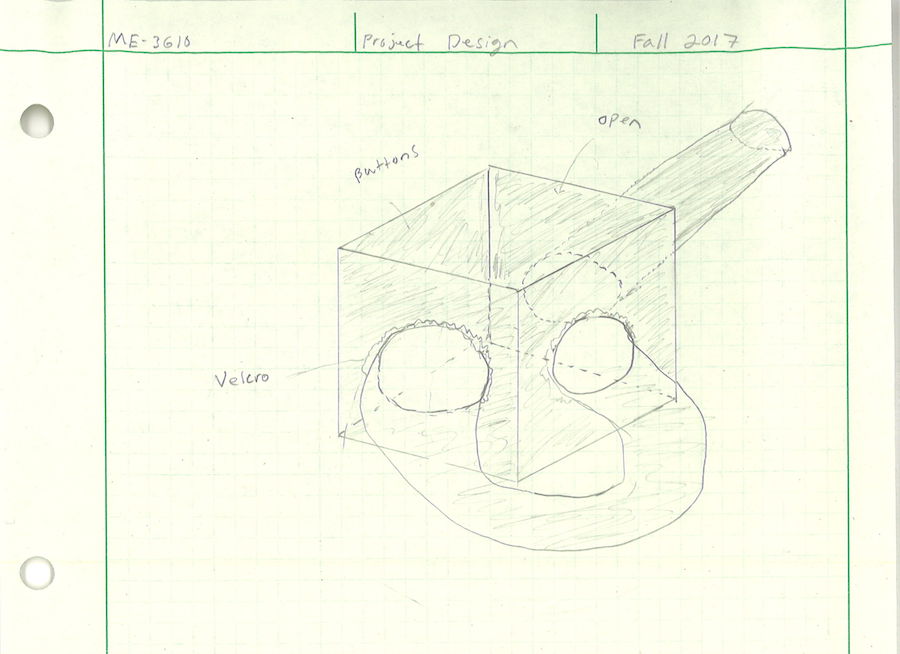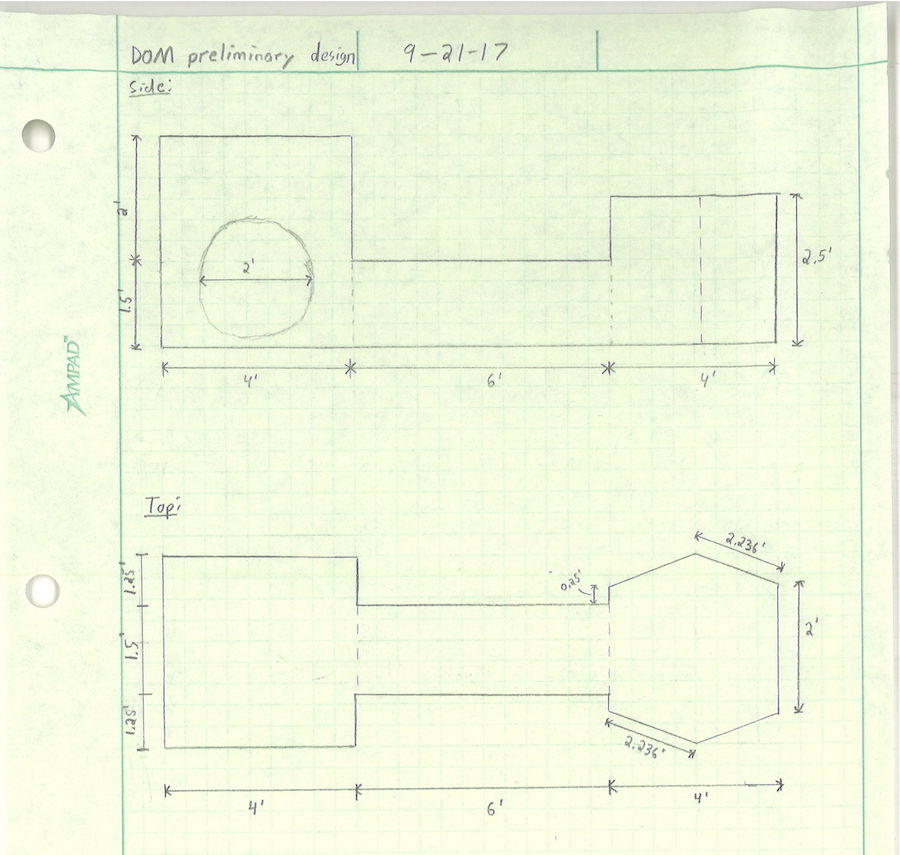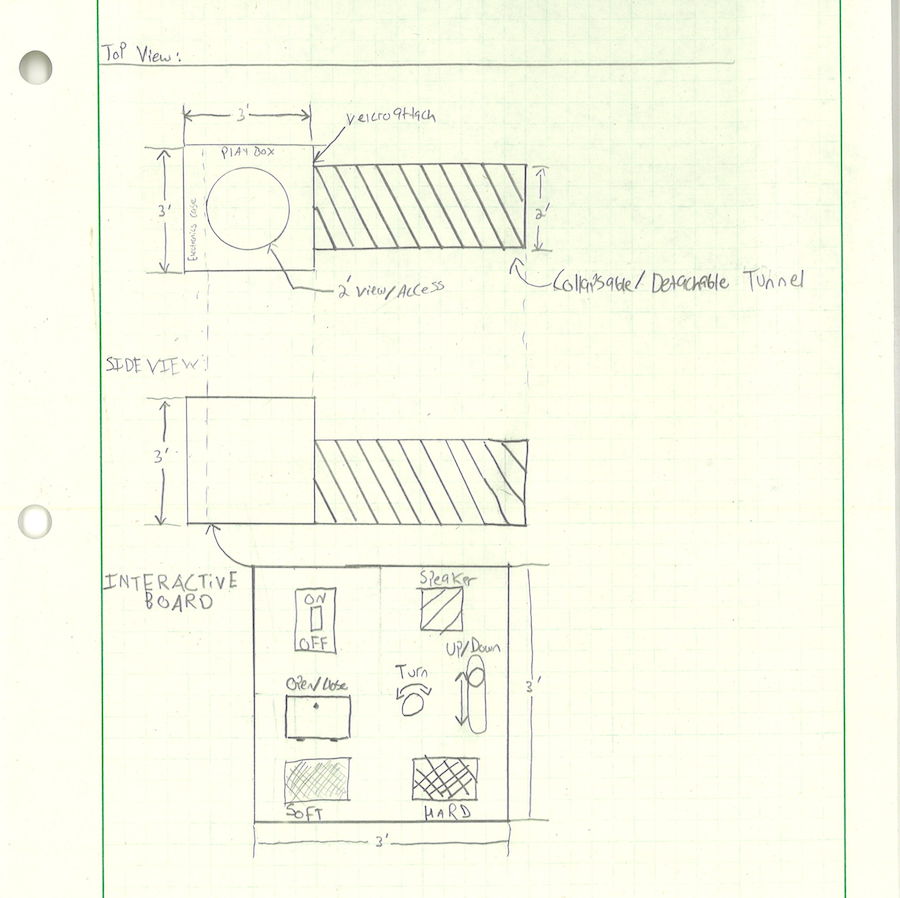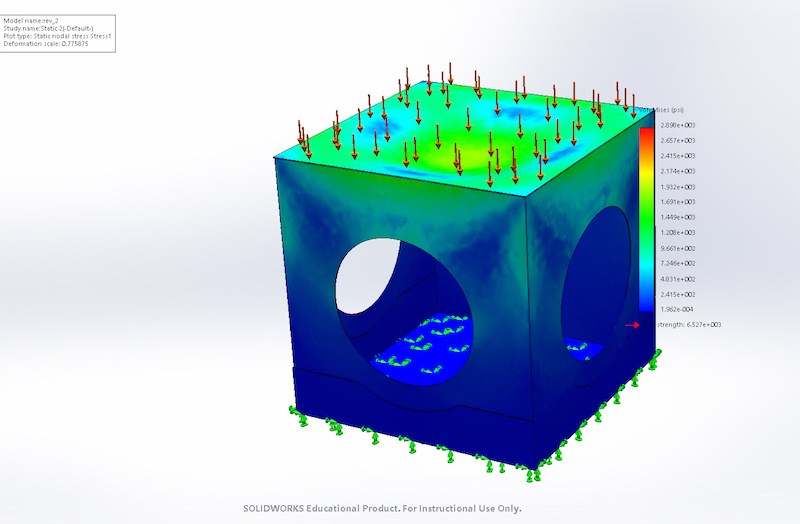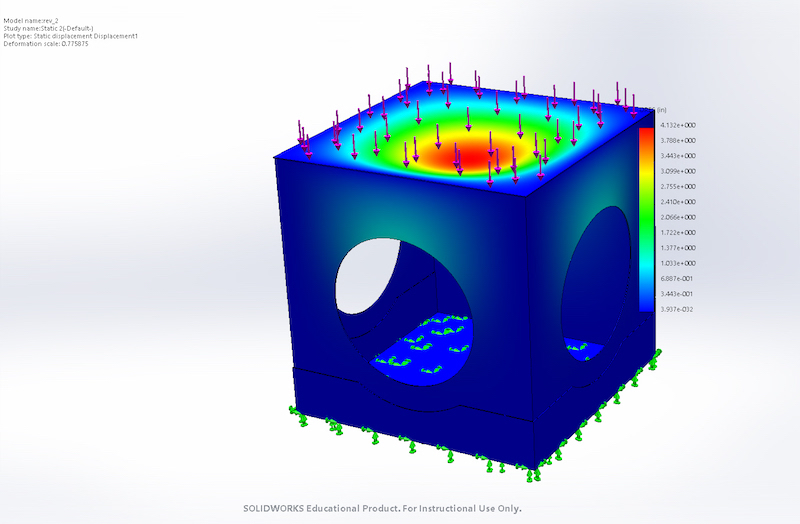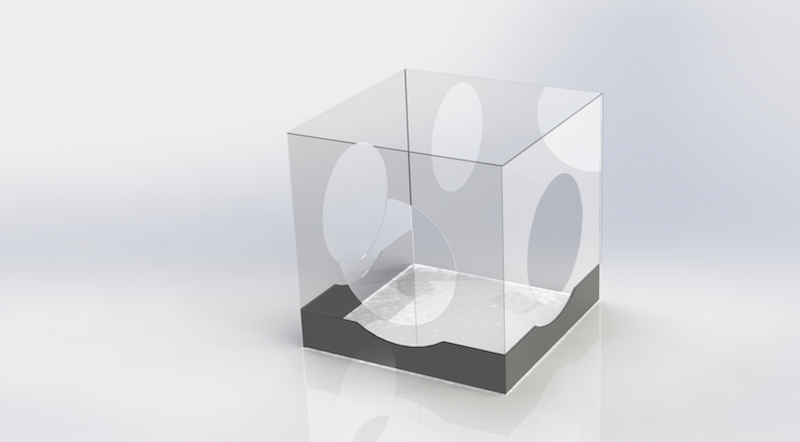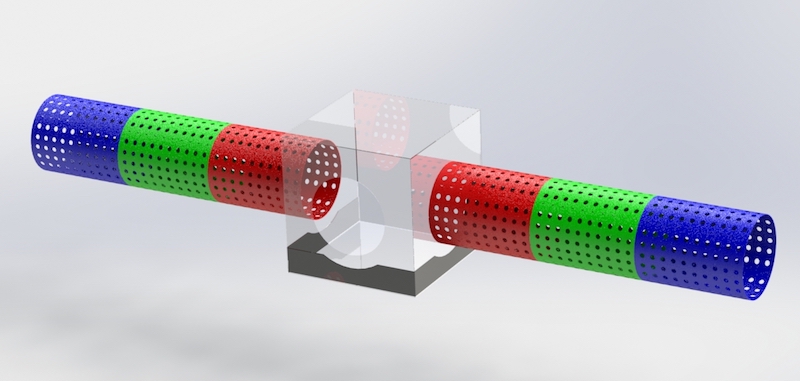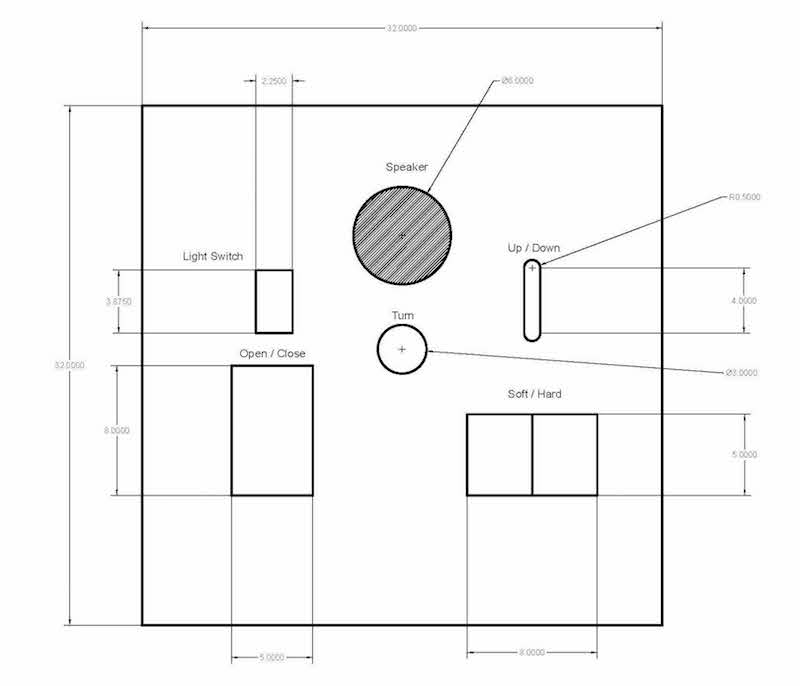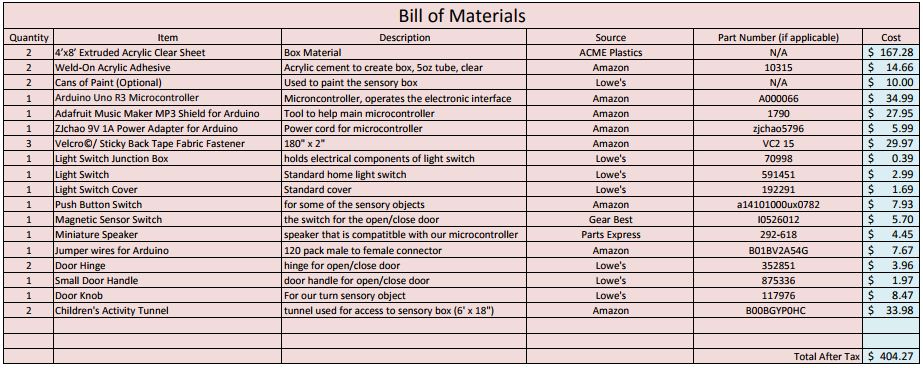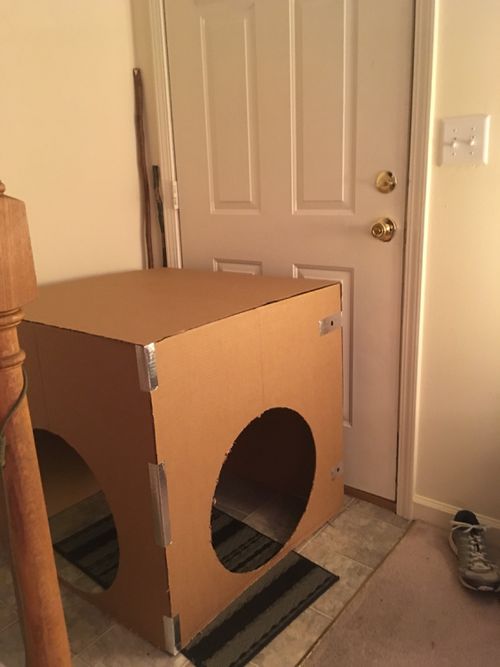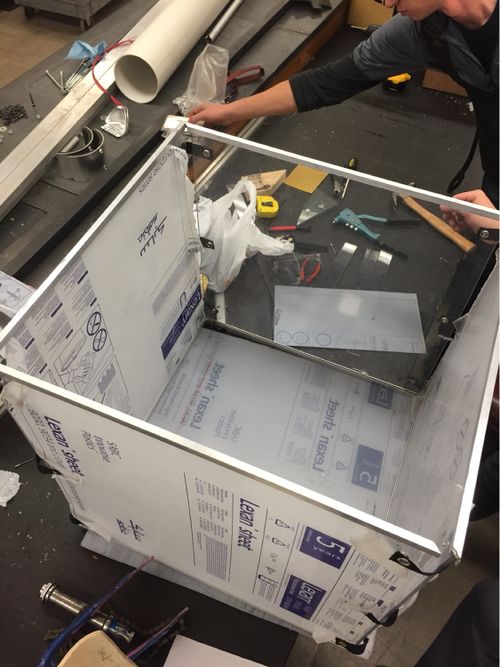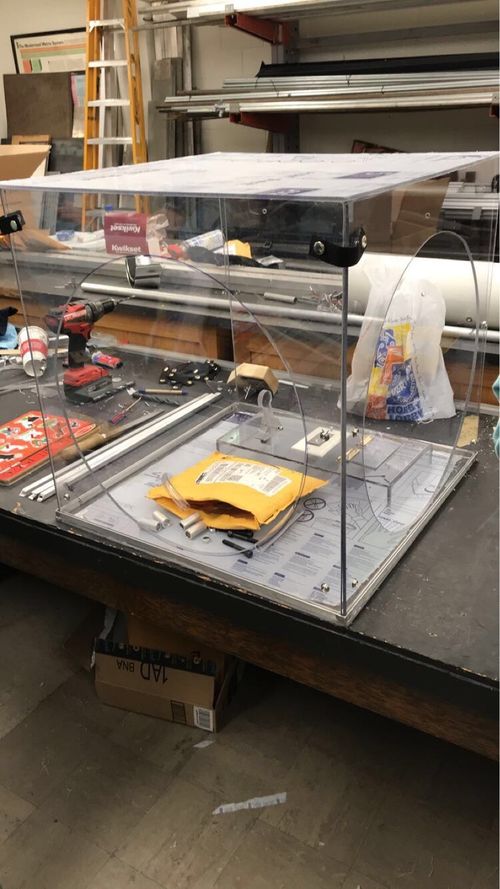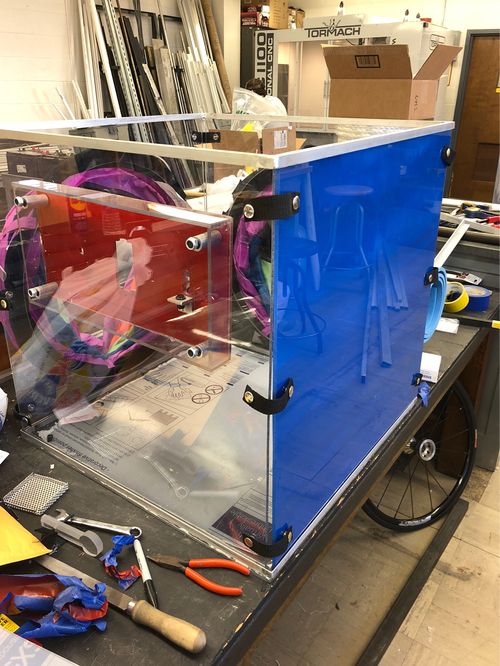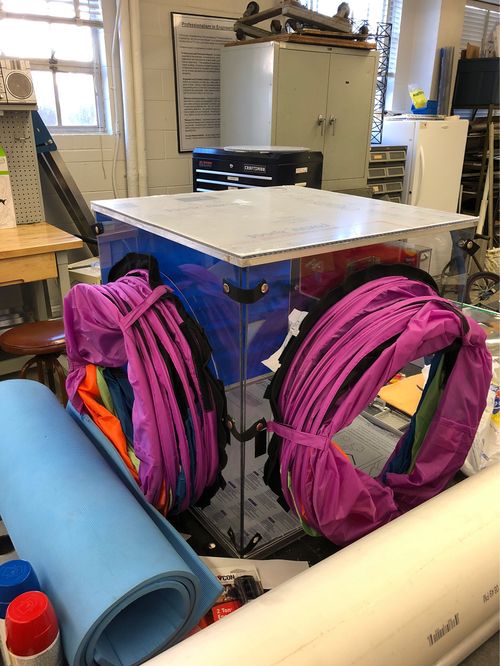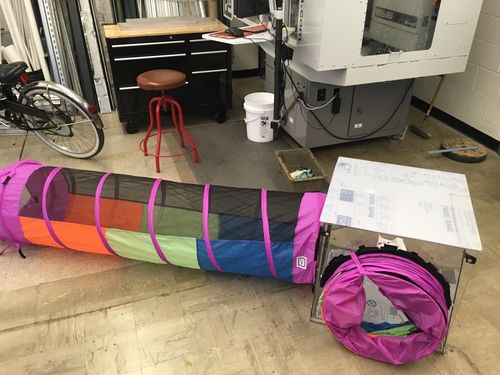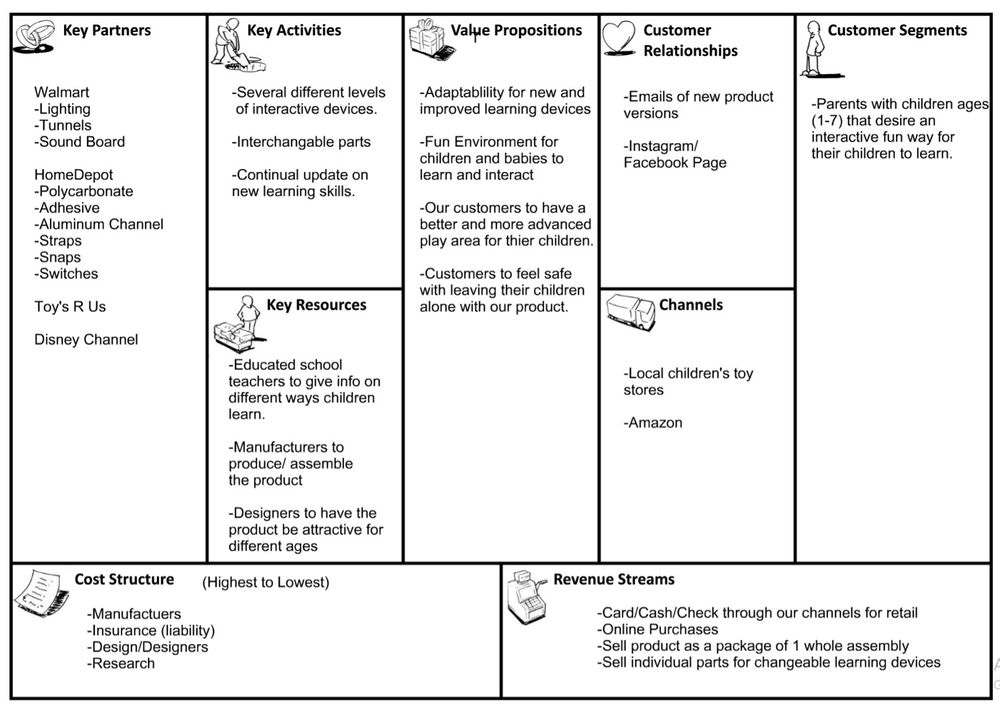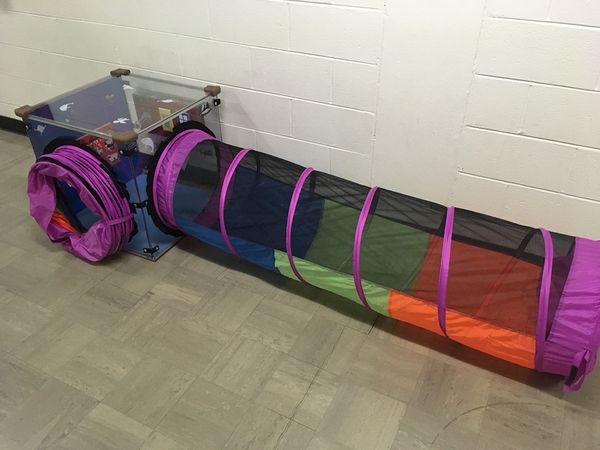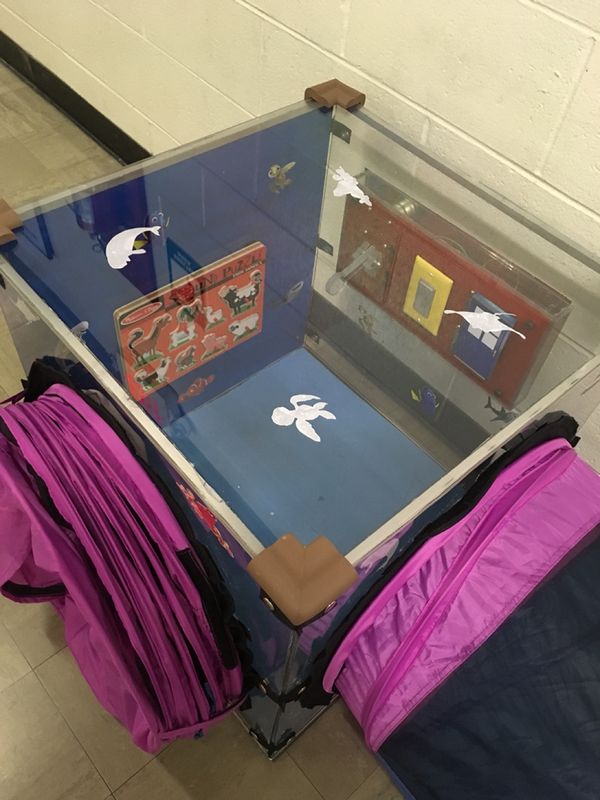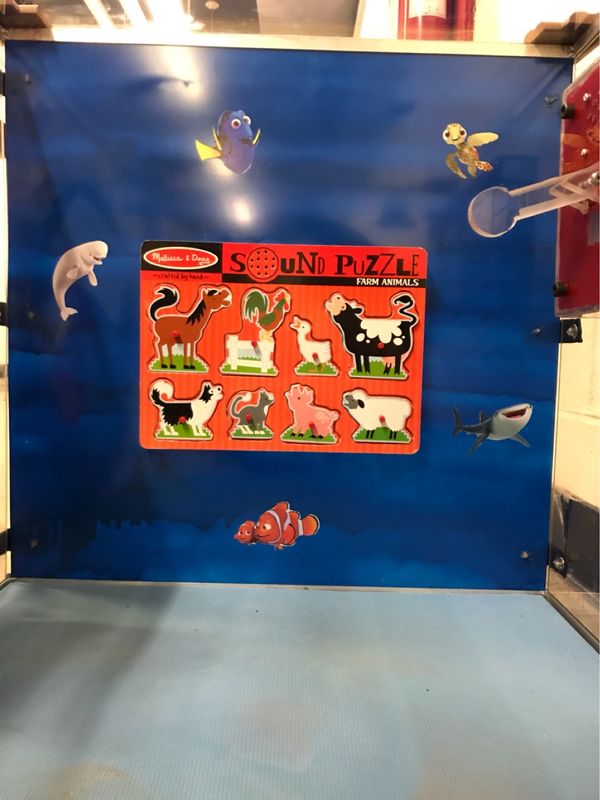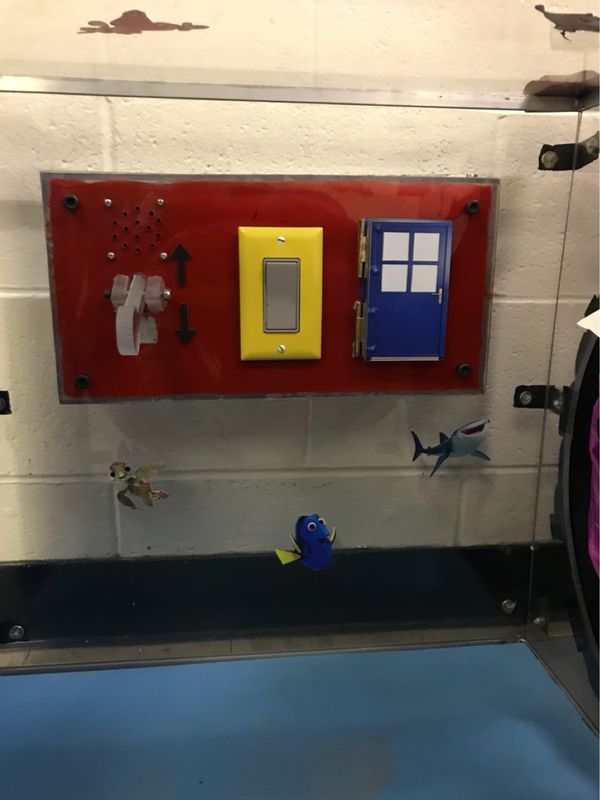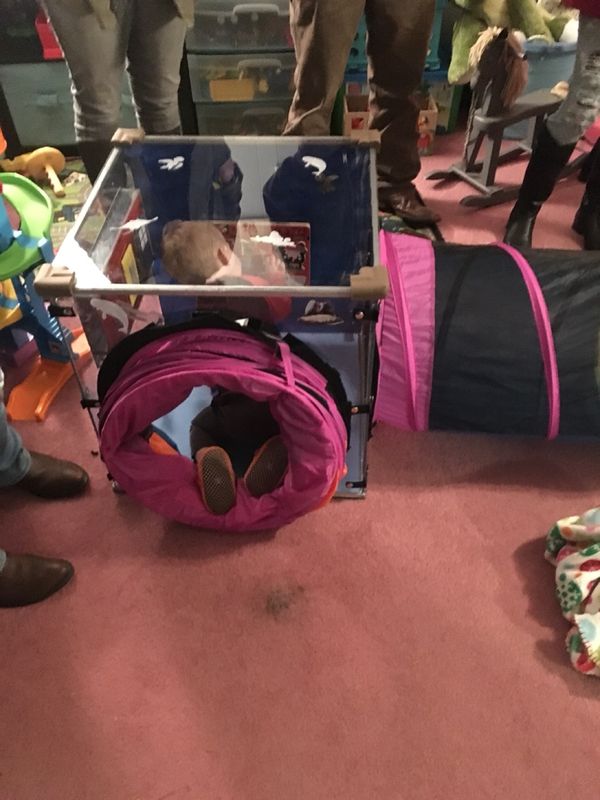Proprioceptive input device
Contents |
Abstract
A young boy with autism loves tunnels and has worn down his old one; therefore, he would like a new one that incorporates sensory objects that will help him learn. (add later: findings of project and project outcome.)
Team members
Team Members: Josh Hooper, Jon Neely, Nate Biggs, Justin Douglass, Tea Phillips, Jacob Parnham, Kurt Denton, Olivia Bookout
Others that have helped:
Britin Julian - Child's Therapist,
Tristian Hill - Engineering Lecturer,
TTU Autonomous Robotics Club
Problem Statement/overview of the need
Alex, a two-year-old with autism, loves tunnels and has worn out his old one, so they would like a new tunnel that incorporates sensory objects in it. They hope that these sensory objects will help him combine words with actions. The idea is that the tunnel will draw him in to play with the toy, and then once inside, he will become interested in the sensory objects, that will help him learn.
Design Specifications
List of design specifications: needs to be collapsible, stretchy, sensory objects that feel: rough, soft, furry, etc. The object will be most useful if he can hear words, when he completes an action such as in/out, open/close, on/off, etc. The space is limited in the room where it will be set up, and allows for 12 feet of total length. The largest design feature that the family needs is that it needs to be collapsible.
Background research
1. Currently there are many items on the market that are similar to our tunnel design, and many child toys that give voice feedback when a button is selected or a command is satisfied.
2. The current products are very available at Walmart, Amazon, etc for a very affordable price.
3. The current products are mostly low cost, lower quality goods that serve their purpose, but may not last longer than a few years. The biggest problem with these designs is that we have not found a product that incorporates both a tunnel and a sensory input board.
Conceptual Design
To generate the most applicable designs, we had two group members attend a meeting with the physical therapist and Alex's family. We created a list of needs and wants provided by the family and decided to create four individual concepts.
Design Concept 1
- Design Concept 1 - A two-piece tunnel design with three walls containing responsive devices to engage Alex in learning and word correlation.
- Performance Estimate: We believe it satisfies Alex's needs with his family's wants.
Design Concept 2
- Design Concept 2 - A tunnel design with multiple configurations, featuring a side of electronic sensor input devices.
- Performance Estimate: We believe it satisfies Alex's needs with his family's wants.
Design Concept 3
- Design Concept 3 - Larger box with tunnel entrance featuring sensory objects of different sorts. Tunnel connects to a ball pit.
- Performance Estimate: We believe it satisfies Alex's needs with his family's wants.
Design Concept 4
- Design Concept 4 - Tunnel featuring a play area and an interactive board for informational stimulus. Folds into a 3' x 3' square.
- Performance Estimate: We believe it satisfies Alex's needs with his family's wants.
Evaluate concepts/select candidate
After presenting the concept designs and evaluating some critical input, we have decided to move forward with the second design presented. There are aspects of each design that we are planning to keep but the core design will look like design two. The second concept design was selected because it suits the needs previously mentioned, and it will allow flexibility be altered and changed to stimulate continued interest in the client. The main part of the other designs that will be kept is the details of the sensory board.
Detailed Design
After the selection of preliminary design 2, we made a few more modifications to improve and match the needs of Alex better. Originally, we were planning to leave the top of the box open, but after analyzing the forces we found that the box would collapse with very little force applied to the sides from the interior of the box. We plan on having two short tunnels that are removable and collapsible, and one will be red and the other blue. They also will have velcro on each end of the tunnels, so they can be attached to the sensory box or to each other. There will be three tunnel holes on the sensory box located in the center of three sides. Each hole will have velcro on the outside of it, so the tunnels can be attached to it in different arrangements. The box will be clear, and the top will be able to popped off, and the sides can be broken down for easy storage. The side of the box that does not have an entrance hole will have the sensory board on the inside of the box. The sensory board is going to include a light switch, a miniature door that will open and close, a lever that slides up and down, turning a knob, and there will be a speaker that gives Alex feedback on his actions as he interacts with the board.
Analysis
Describe three types of analysis to be performed on the design
Engineering analysis 1
FEA Analysis as if a 150lb distributed load were placed on top of the main box. This is to simulate a large, heavy object being placed on the box. This indicates that the box should not have anything heavy (>25 lbs) placed on top of it.
Engineering analysis 2
Power consumed:
P = V*I = 9v * 1A = 9W
E = P*t = 9W *1hr = 9W*hr
For each hour of use, the electric devices consume 9W
Engineering analysis 3
Mass and Geometric Properties
Box Weight: Approximately 40 pounds
Box Volume: 32,768 in^3
Surface Area of Acrylic: 6,533 in^2
CAD Drawings
Bill of Materials
Assembly Instructions
For Assembly Instructions, see the User Guide available here
Assembly Timeline:
- Order parts (approximately a week delivery)
- Cut sheets of acrylic down to size (approximately 2 man hours)
- Assemble box (approximately 8 man hours)
- Create sensory board/interior of the box (approximately 2 man hours)
- Coding arduino microcontroller to perform sensory tasks (approximately 5-8 hours) *We anticipate seeking help from Instructor Hill and TTU ARC if needed*
- Test Final Product
- Create user guide
Fabrication Process
Pictures of the Fabrication Process
Testing and implementation
The testing consisted primarily of pushing on the box in all directions, feeling for any rough edges, and looking closely for any shape corners or edges. One change that had to be made after testing the product was that snaps were needed on the top and bottom for additional stability. Additionally, there were a few protective pads linked to the product for protection. However, in spite of a few needed adjustments, the overall design was a tremendous success and it seems like Alex will profit greatly from the implementation of this design.
Business Model
Below is an example of the Business Model we would follow if we were going to produce this design.
Photos of Completed design
Instructions for safe use
Provide a clear summary of safe use for the family. Do not use the device unless supervised by an adult that has been fully understood the safe use of this product. User Guide is Available Here
Project Summary, Reflection
The box seemed to suit Alex's needs very well and he was a real pleasure to watch as he laughed and tumbled through his new toy. Sadly our team had to take the box back to make a few modifications which upset our happy little friend very much. It was a very rewarding project to be able to bring a child so much happiness with all our hard work and time. He certainly will profit from it so knowing that makes all that we had to go through as a team very much worth it.
